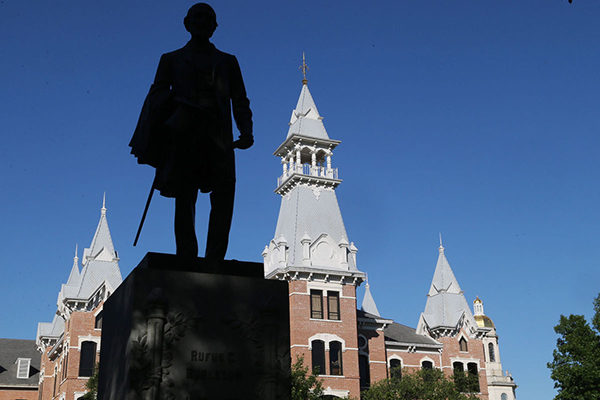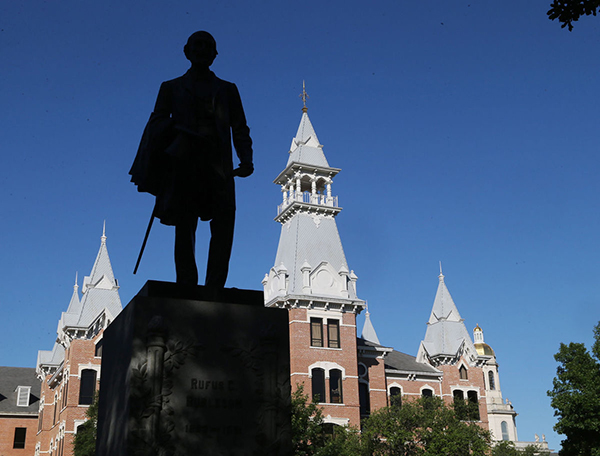Members of a Baylor University commission charged with recommending ways to address the institution’s historic ties to slavery and the Confederacy often were distressed as they studied the racist beliefs and actions of the university’s founders.
“I would say it was hard to read; it was painful,” said Alicia D.H. Monroe, provost and senior vice president of the Baylor College of Medicine and co-chair of the 26-member Commission on Historic Campus Representations.
Monroe and her two co-chairs joined Baylor President Linda Livingstone March 16 for the last of three virtual forums examining the history of slavery in the U.S. and Texas, and also among Baptists.
The final discussion delved into the commission’s 2020 work of connecting the available historical record to the monuments, building names and other spaces related to the university’s slave-owning founders: Judge R.E.B. Baylor and fellow Baptist ministers James Huckins and William M. Tryon.
“My family is not too many generations out of slavery, and so to reconnect with the human experience of enslavement.”
Their report, due for public release March 26, offers recommendations to the Baylor board of regents and administration on how to disseminate the commission findings and what to do about physical representations such as statues.
The emotional impact of taking a deep dive into slavery, the Confederacy and Baylor’s racist founders hit commission members hard, they said.
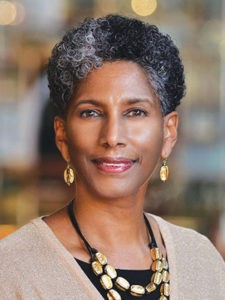
Alicia Monroe
“My family is not too many generations out of slavery, and so to reconnect with the human experience of enslavement — I was not quite prepared for that,” Monroe said.
She described feeling the indignity and inhumanity of humans being treated like property instead of as children of God: “That was a personal piece for me.”
It also was difficult to learn how slavery caused a rift between Baptists who opposed it and those who supported it and eventually led to creation of the Southern Baptist Convention, she said.
Nor was it easy watching other members of the commission — which included 17 ethnically diverse members — encounter all this troubling historical detail, said Co-chair Gary Mortenson, dean of the Baylor School of Music.
“Watching the way people process this and some of the raw emotions that came from that … was something that was very difficult for me.”
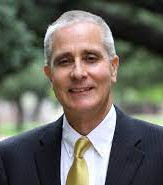
Gary Mortenson
Also difficult was discovering how economics drove Baylor, Huckins, Tryon and others to Texas in the first place, he added. “It’s humbling to realize that the foundational wealth that Baylor was built on was built from a slave economy. This was difficult and emotional and hard to really work through.”
Monroe said she was able to come to terms with the racist attitudes and practices of Baylor’s founders by remembering others who have fallen short yet made significant contributions.
“We also learned about David and that he was a man after God’s own heart and that he was a mighty warrior and he was a king, but because of the blood on his hands God did not allow him to build this temple,” she said. “David was also a murderer and adulterer but still wrote some of the most beautiful psalms that we use in our churches today. So, we know that people who love God can frankly not be perfect people.”
Focusing on the Confederate connections of Baylor’s founders and early supporters proved to be problematic for many commission members, as well.
Baylor facilities were used as barracks and training grounds during the Confederacy, and students and faculty were either directly or indirectly behind the cause, Mortenson said.
“That also was difficult. And you know it didn’t stop with the end of the Civil War. It isn’t like the war came to a full stop and everyone just totally accepted one another,” he said. “And here we are today and there still is a lot of polarization along serious lines.”
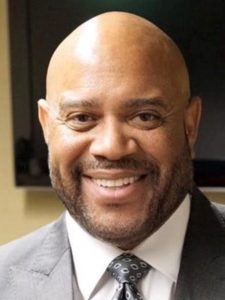
Walter Abercrombie
Shedding light on monuments to the founders was no less challenging, said Co-chair Walter Abercrombie, associate athletics director for the Baylor “B” Association and a former Baylor running back.
“When you see some of that representation on campus, it is difficult to swallow,” he said. “What happened to me is that I began to wonder, how can I feel good about my university when I knew that there was this?”
Abercrombie said he underwent a change of heart when considering the humanity of the generation that founded Baylor. “You realize some of the really good things they did and some of the powerful work they were able to accomplish, and you see, well, they weren’t all bad men.”
While commission co-chairs did not disclose what recommendations have been presented in the report, including around the fate of monuments, their discussion hinted that it will include solutions that add rather than subtract.
That may include adding a required course on these aspects of Baylor’s history, including the information in student leadership training and faculty and staff development. Language also could be added to campus tours and to statues.
“Everybody on the commission agreed that that was the direction we needed to go,” Abercrombie said.
Related articles:
Baylor regents ‘accept’ racial history report, will release findings by end of March
Alumni applaud Baylor University’s pledge to explore racist roots
Tearing down statues doesn’t erase history | Opinion by Ella Wall Prichard
Baylor not yet where it wants to be on race, Livingstone tells forum

